Bamboo sheets have been gaining popularity over the years for their soft and luxurious feel. They are breathable, eco-friendly, and even softer compared to other traditional bedspreads made from cotton sheets. Owning one can greatly improve the quality of your sleep and life in general.
Bamboo textiles in general are known for their durability and longevity. So, to ensure our bamboo sheets always maintain their softness and last longer, proper care and maintenance are needed. So, in this article, I will be showing you how to care for bamboo sheets.
You can easily care for your bamboo sheets by washing, drying, and de-wrinkling them, but while doing this, special care needs to be taken so they don’t lose their silky soft feel and also last longer.
Table of Contents
ToggleHow to Care for Bamboo Sheets
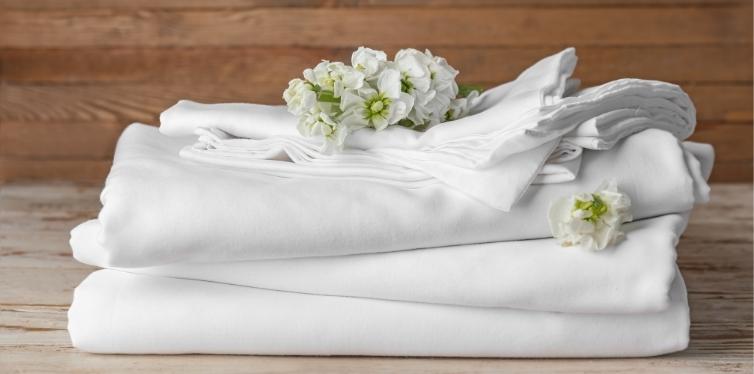
Bamboo sheets are made from viscose, which is found in bamboo fibers. They are softer, with a smaller carbon footprint and less of an environmental impact compared to cotton, which is why many people prefer them to those made from cotton sheets.
Another benefit or advantage of using bamboo sheets is that they are breathable and do not hold or trap heat under the covers, making them some of the best bed sheets for a good night’s sleep.
As a result, special care for your bamboo sheets must be taken when caring for this delicate fabric so that it is not damaged. Their care routine involves washing, drying, de-wrinkling, and storing them correctly and properly.
It is important that these steps are not messed up, or you will be left with a stiff, pilled, and wrinkled sheet.
For first-time users, it is advisable to wash bamboo bedding before use. Your new bamboo bedding might appear a little stiff when first purchased, but when you wash bamboo sheets that will help soften the natural fiber, making the fabric softer and smoother.
One question mostly asked by first-time owners of bamboo sheets is “will bamboo sheets pill if not washed correctly?” Well, the simple answer is yes. It will not only pill but also shrink and lose elasticity.
You should also consider carrying out this care routine every 7 to 10 days, especially during the summer months when we tend to sweat more. In the winter season, you can choose to do them every two weeks.
Below, I will be discussing some of the ways you can correctly care for your bamboo fabrics such as your bamboo sheets, bamboo pillowcases, bamboo clothing, etc.
Step 1: How to Wash Bamboo Sheets
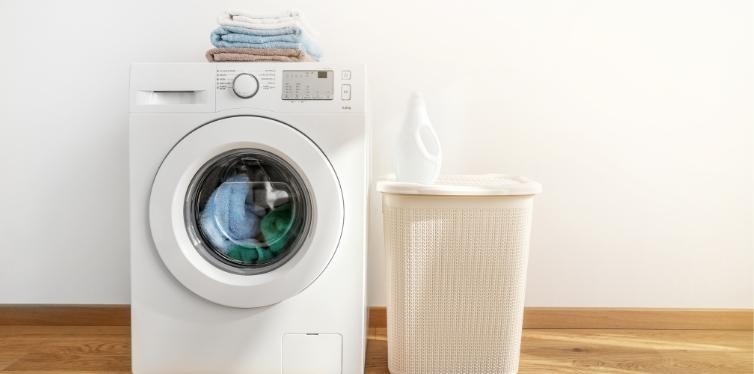
Despite their luxurious look and feel, washing bamboo bed sheets is not that difficult. It is quite easy. It shares similar washing instructions with other fabrics made from natural fibers. Once these instructions are properly followed, your bamboo sheets will always remain soft and last longer.
Avoid using hot water when washing your bamboo sheets, as it can cause the sheets to shrink. Using cold or warm water is the best option. Always use mild detergents when washing and also avoid fabric softeners.
You can choose to either wash your bamboo sheets by hand or with the use of a washing machine. When using a washing machine, ensure you use a delicate or gentle setting so as not to damage the fabric.
Types Of Detergent to Use In Washing Bamboo Sheets
As stated earlier, always make use of mild detergents when washing your bamboo fabrics. Always opt for mild liquid detergents as they contain little to no harsh chemicals that can cause damage to your fabric.
If you are making use of powdered detergents, always dissolve them in cold water before putting them into the washing machine.
Always avoid using bleach or fabric softeners as they contain toxic chemicals capable of damaging your soft bamboo sheets and weakening their rayon fibers.
Bamboo Fabric Washing Guide (Summary)
- Always give your new bamboo bedding a pre-wash before using them to help soften them up.
- Always wash bamboo sheets separately from your other fabrics. Your bamboo sheet can be entangled with the zippers and hooks from the other fabrics, causing abrasions, pilling, and even tears.
- When washing your bamboo sheets, always use cold water (a maximum of 30 degrees) on a delicate/gentle cycle.
- Always make use of mild liquid detergents. If you are fortunate to have biodegradable eco-friendly detergents, you can make use of them as well. If you prefer using powdered detergents, always dissolve them in water before use.
- Don’t make use of bleach or fabric softeners as they contain harsh chemicals capable of damaging your fabric.
Step 2: How to Dry Bamboo Sheets Without Shrinking

When it comes to drying your bamboo sheets, you can either choose to air dry them or tumble dry them. Both methods, if properly done, won’t damage or ruin your bamboo sheets.
Air Drying
Most bamboo sheet manufacturers recommend air drying your new bamboo fabric outdoors under good weather conditions. Due to their delicate nature, it is always advisable to air dry them to avoid damage and help maintain elasticity and color.
It is best to keep them away from direct sunlight as it can damage and shorten the lifespan of your bamboo fabric.
The best time for air-drying your bamboo bedding would be in the morning. This way, your bamboo sheet would be protected from intense sunlight and also take its time to fully dry.
Air drying helps to reduce your carbon footprint and also helps you save money on your electricity bill.
Machine or Tumble Drying
If you live in an area with intense heat, you can choose to tumble-dry your bamboo sheets. This needs to be done properly or you might end up shortening the lifespan of your delicate fabric.
To avoid damage to your sheets, always set the machine at the lowest heat and low tumble cycle. Drying using high heat levels can cause the bamboo fibers to break down. This will keep the fabric well taken care of, especially to keep the breathable quality bamboo sheets are known for.
Step 3: How to Remove Wrinkles From Bamboo Sheets
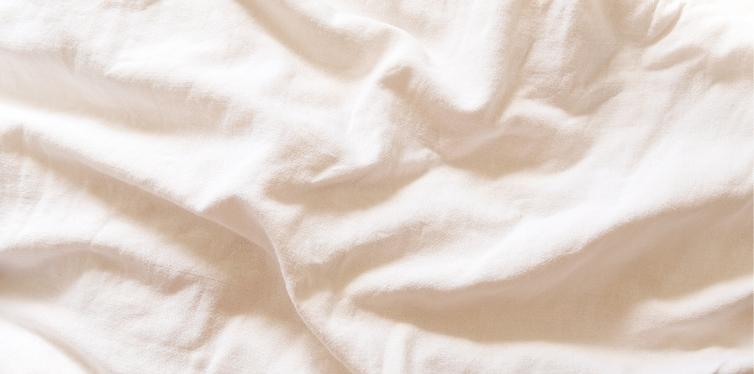
Unlike other bedding manufacturers, bamboo sheet manufacturers don’t use formaldehyde to help straighten and prevent wrinkles on their products. This isn’t uncommon in the world of non-organic cotton. For this reason, you will notice your bamboo sheets always get wrinkled, especially when washed.
If you choose to use a dryer to dry your sheets, you are more likely to get a more wrinkled final product compared to someone who air dries.
Don’t Completely Dry Your Bamboo Bedding
The best and easiest way to prevent wrinkles on your bamboo bedding is to remove them from the dryer before they get completely dry. You can then proceed to hang them on a line or lay them flat to allow the sheet to finish its drying process. You want to avoid using a fabric softener.
Allowing your sheets to dry when still rumbled in the drier is the main reason why they come out wrinkled. But if you remove them from the dryer and spread or hang them to dry, it will significantly reduce wrinkling.
Ironing Your Bamboo Sheets
Another way of removing wrinkles from your bamboo fabric is by light-ironing it. If after drying out your bamboo sheets, they still have signs of wrinkles, you can easily iron them out.
When ironing your sheets, ensure your press iron is at its lowest setting. Using high heat to iron them can make your bamboo sheets shrink, rip, or lose their softness. Also, avoid using steam unless it is necessary.
How To Store Your Bamboo Sheets
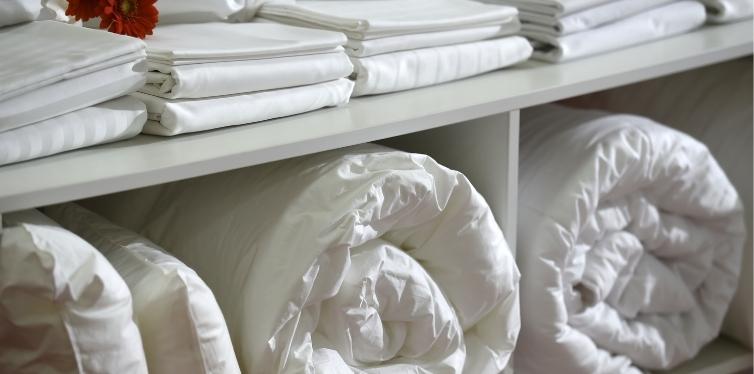
You can easily store your bamboo sheets when they won’t be in use for a while. Due to the absorbent nature of bamboo sheets, they are prone to mildew growth. Storing them in plastic bags or areas with lots of moisture can lead to mildew growth.
The best bamboo sheets are shipped in reusable bags made from bamboo fabric. These bags are breathable and don’t trap heat or moisture within.
So, after carefully folding your bamboo sheets, gently place them into the bag and keep them in a dry area.
And if you eventually decide to replace your bamboo sheets, you can send them to a landfill as they are 100% biodegradable and safe for the environment.
How To Remove Stains From Bamboo Sheets
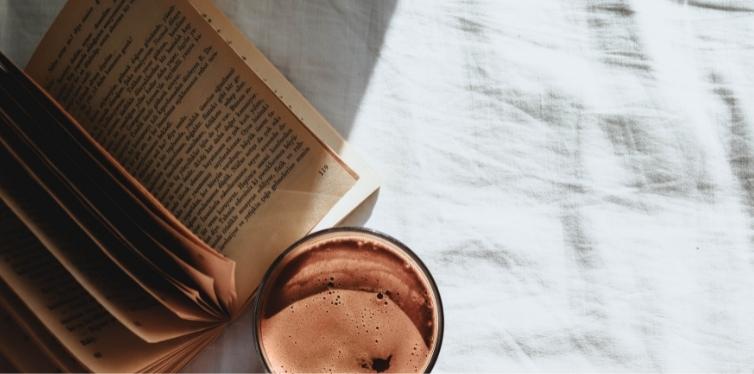
You might have a stained sheet that needs cleaning, but since you can’t use bleach as a result of the harsh chemicals it contains, you need to find an alternative method. These are some ways you can remove certain types of stains from your bamboo sheets.
Sweat
One of the most common stains you will see on your bamboo sheets is sweat. When sweat accumulates and dries on your sheet, it can leave a yellow mark. You can easily get rid of these stains by washing your sheets regularly.
For more stubborn stains, or in situations where the stains refuse to go away after several washings, you can make use of a gentle-rub detergent.
Blood
Blood will be a little harder to get rid of, so the best way would be to soak the affected part in cold water. After a while, you can add some enzyme-based stain remover to the water and let it sit for a while.
If you notice the stains are off, you can then place the sheet in your washer to finish the washing process.
Can You Whiten Bamboo Bed Sheets?
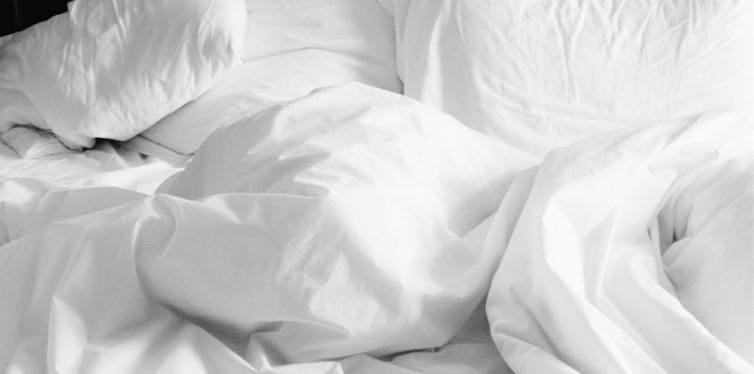
If you happen to have a white bamboo sheet, after a while you might start to notice a color change. If you are wondering if it is possible to whiten such bamboo sheets, well, the answer is yes.
You can easily whiten them without having to use any bleach. You can do this by adding citrus juice or white vinegar whenever you are washing your bamboo sheets.
You can also soak your sheets in a baking soda and water mixture. Allow it to sit in water until you start noticing changes in the color of your sheets.
Final Thoughts
Taking care of your bamboo sheets is pretty straightforward. If properly done, you won’t only be increasing the lifespan of your sheet but also improving its softness and luxury look and feel.
As a reminder, always use cold water when washing; avoid using bleach or any type of fabric softener as they can damage your fabric; and keep the heat level on the lowest setting when using a washer, drier, or pressing iron to avoid damaging the fabric.



